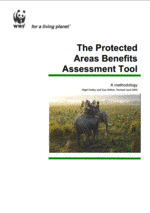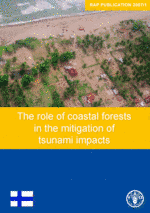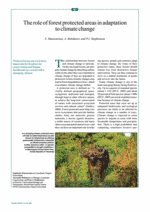Tools
A tool is a resource that supports and guides the implementation of SFM. This section includes all the tools available in the SFM Toolbox, which can be in form of publications, e-learning videos, software etc.
You can browse the Tools through keywords in the free search box or you can narrow the search using the filters on the right side of the page.
This course provides the necessary knowledge to build a sustainable National Greenhouse Gas Inventory (NGHGI) and assess greenhouse gas (GHG) emissions and removals from the land use sector. It focuses on the biological and physical process that lead to GHG fluxes from land use-related activities.
This course is part of the...
On the occasion of the International Year of Mountains-2002, FAO and its partners undertook a large-scale assessment and global review of the current status and future trends of integrated and participatory watershed management. The overall objectives were to promote the exchange and dissemination of experiences in implementing watershed management projects...
Protected areas of one sort or another cover about 10 per cent of the world’s land surface; the large majority were established in the second part of the twentieth century. Although most were originally set up to protect landscape values, wildlife or more recently biodiversity, they are increasingly expected in...
The Restoration Diagnostic is a structured method for determining the status of enabling conditions within a landscape being considered for restoration and for designing the requisite policies, practices, and measures needed for successful restoration. The Diagnostic was developed as part of the Restoration Opportunities Assessment Methodology (ROAM) by the World...
Food and social protection are human rights. In these times of crisis, the right to food of millions is at risk. Hunger is on the rise. Extending social protection can help us get back on track to end hunger by: (i) securing access to nutritious, safe and affordable food...
By declaring the Decade on Ecosystem Restoration, the UN has recognized that there are only 10 years left to restore the world's degraded land. Countries are striving to fight climate change by 2030 through their Paris Agreement commitments and the Sustainable Development Goals (SDGs). But in many cases, their climate...
The road to restoration: A guide to identifying priorities and indicators for restoration monitoring
2019
2019
This guide walks practitioners through seven questions to help them make decisions regarding restoration monitoring. First, practitioners are asked to determine their restoration goals, land use and barriers to sustainability. These choices are filtered by constraints and priorities, so the practitioner will develop the indicators needed to setup their monitoring...
The role of coastal forests in the mitigation of tsunami impacts unexpectedly became a hotly debated topic in the aftermath of the 2004 Indian Ocean tsunami, which ranked amongst the most devastating natural disasters in recent history. A proportion
of the reconstruction and rehabilitation effort was focused on rehabilitation of coastal...
The relationship between forests and climate change is intricate. On the one hand forests can mitigate climate change by absorbing carbon, while on the other they can contribute to climate change if they are degraded or destroyed. In turn climatic changes may lead to forest degradation or loss – which...
National organizations and networks of smallholder forest producers play an important role in contributing to climate change mitigation and adaptation, spanning political and practical action. Innovative and successful climate action builds on the particular strengths of each organization, and harnesses both the support of the membership base as well as...










